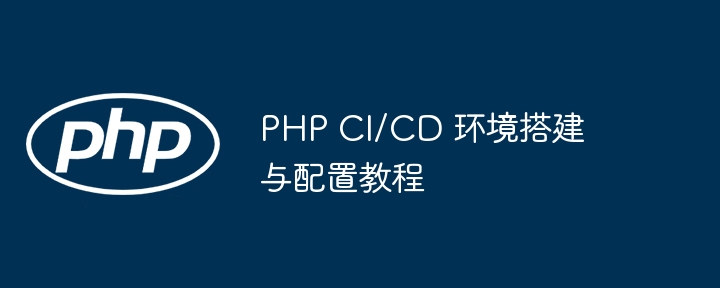
Abstract: Tutorial on setting up a PHP CI/CD environment: Create a CircleCI project and connect to the GitHub repository. Configure the CircleCI script in the config.yml file, including version, Docker image, and build steps. Add composer.json, composer.lock and app.php files to the project. Create a .circleci folder in the repository and copy the config.yml file. Pushing changes triggers the pipeline. CircleCI provides test results and build status information.

PHP CI/CD environment setup and configuration tutorial
Introduction
Build , integration and continuous delivery (CI/CD) processes are critical to maintaining the efficiency of modern software development processes. This article will guide you step by step in setting up a CI/CD environment for PHP projects.
Prerequisites
CI/CD workflow configuration
.circleci/config.yml file of the project: version: 2.1
jobs:
build:
docker:
- image: php:7.4
steps:
- checkout
- restore_cache:
key: composer-cache-{{ checksum "composer.lock" }}
- run: composer install
- cache_restore:
key: composer-cache-{{ checksum "composer.lock" }}
- run: phpunitPractical case
Add the following to your project:
app.php File: Contains the source code of the project Repository settings
.circleci folder in your repository. config.yml file to the .circleci folder. Pipeline Triggering
CircleCI will automatically trigger a pipeline when you push changes to GitHub.
Results
After the pipeline runs, CircleCI will provide test results and other information about the status of the build.
Troubleshooting
The above is the detailed content of PHP CI/CD environment setup and configuration tutorial. For more information, please follow other related articles on the PHP Chinese website!